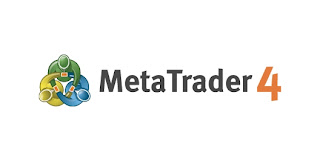History of Forex Part 2
In year 1944, the world economy was devastated and exhausted by the two wasting wars, that left a scar on the currency trading too. The trade flows had almost stopped and the free movement of gold was nearly impossible. To restore the international economic system, something had to be done immediately, without hesitation. Almost all the countries realized that the world has changed; the war experience emphasized the importance of joint efforts and cooperation for getting good results.
As the continue, 45 countries gathered on a conference in Bretton Woods, Great Britain in 1944, to set up a system of rules, institutions and procedures to regulate the international monetary system. The purpose of the conference in Bretton Woods was to prevent the reoccurrence of the dreadful events like the Great Depression of the 1930 and to secure the world economy, additionally helping it to recover from the postwar crisis.
The results of this conference played the great role in Forex trading history, and they came with the following facts:
- Finally setting up of a fixed exchange rate system, linking the US dollar at the rate of 35$ per ounce of gold, while all other currencies were defined in relation to dollar. Thus, the role of the world leading currency shifted from pound sterling to dollar, and the international economy became dollar-centered (which remains to be truth till the present day, actually). Most international transactions began to be denominated in USD.
- Beginning of Foreign exchange as we know today. It became possible due to fact that world currencies started to be pegged against one another.
- Establishing the International Monetary Fund (IMF), the main regulating monetary institution in the world. IMF was designed to be the keeper of the rules and the main instrument of public international management. Its role is also to be an advisor on monetary policies for the countries of the world and to finance trade deficits.
- Creating the International Bank for Reconstruction and Development (IBRD), now the most important agency of the World Bank Group. IBRD focused on promotion of world trade and financing the post war reconstruction of Europe. Now it is charged with making loans for economic development purposes.
But after some time, the Bretton Woods system started showing some disadvantages. The world economy finally started recovering, which seemed the certain plus and advantage of the system. The volume of international trades flashily increased, and this led to the massive movements of currency. The fixed foreign exchange rates which were set up according to this system, quickly destabilized and became senseless in the new conditions. So strange, but the positive economic trend was not positive at all and resulted in the negative financial effect.
An attempt to stabilize the situation within the framework of the Bretton Woods system was made in 1971. It was called the
Smithsonian Agreement and was held under the U.S. leadership. According to the
Smithsonian Agreement, the dollar was devalued to the rate of 38$ per ounce of gold in an attempt to balance the world financial system. However, the problem with all this was the fact that dollar was no longer suitable for the role of the sole international currency. Thus, the efforts to develop a new system of international monetary management failed.
Eventually it all ended with the Bretton Woods system collapsed in 1971, resulting with the fact that dollar was no longer convertible into different goods. This inevitably initiated the rise of the floating exchange rate.
But the significance of the Bretton Woods’ page of Fx history for the world economy can’t be underappreciated. The time of this system was the time when the entire world financial system was rethought and reinvented to achieve results. The whole economic psychology was changed. The Bretton Woods system was one of the important steps to the growing globalization.
After all, the world got the new page in the Foreign exchange history and the
floating exchange rate system as the monetary system that’s existing since 1970s till the present day. After abandoning the system of
fixed exchange rate, the market forces (like supply and demand) were left free to regulate exchange rates basing on their supposed values. Within this monetary framework, there is no single international currency, but there are more than ten currencies which are called most traded (still US dollar being on the first place). The modern Forex market is the result of implementing
floating exchange rate system in the 1970s, and since and thankful to that time Forex has developed into the one of the largest global markets. Of course, many factors played the part in this. Primarily, this is the development of technology and heavy use of computers and the Internet. The capital started moving without any borders. The possibility to make trading and do transactions even from a home computer appeared (this was the opening of the electrical part of Forex history). More with this, trading on Forex is done 24 hours without a stop, since the important Forex trading centers are located in all time zones, from Asia through Europe to America. When one time-zone trading session ends, the session in another time-zone starts.
In
floating exchange rate system the rate of exchange is determined by the
supply and
demand of the currency in the market. For example, the higher is the demand for a certain currency, let’s say, US dollar, the higher its value will be. If the demand for the currency decreases, its price decreases, too. The floating exchange rate is changing continuously, which allows the participants of the Forex market to buy currency for the lower price at one period of time and sell it at much higher price at another, thus gaining profit.
However, there is the reverse side of this phenomenon – the traders can buy currency expecting to sell it at a higher price, though, some factors may influence the market, and the price for this currency will decrease despite the prior expectations, and they will lose the profit. In fact, Forex market appears to be very sensitive and susceptible to the influence of various factors, in particular political, economic and even psychological.
Still, there have been many changes in the world monetary systems since 1970s till present. The most significant is the introduction of
Euro as the single European currency in 2001, and since then it has become one of the most popular and most traded currencies.
In concluding of this whole Forex trading history tutorial, the
history of Forex does not embrace a very large period of time. In fact, it can be referred to two last centuries, while the period when the modern Forex started forming actively refers to the 1970s only. So that means that in fact Forex is a rather “young” phenomenon. Three important events in the history of Forex can be defined: the
Gold Standard, the
Bretton Woods system and
floating exchange system. However, it should be remembered that since Forex is regulated by market forces, its state is changing constantly. Every day can bring the events that would change the face of existing economic system and make history. So, the history of Forex is being created every day and even every hour!




















